Max Verstappen; born 30 September 1997, is a Belgian-Dutch racing driver who competes under the Dutch flag in Formula One with Red Bull Racing. Aged 17 years, 166 days, he became the youngest driver to compete in Formula 1 at the 2015 Australian Grand Prix for Scuderia Toro Rosso. He is also the youngest driver to lead a lap during a Formula One Grand Prix, youngest driver to set the fastest lap during a Formula One Grand Prix, youngest driver to score points, youngest driver to secure a podium and youngest Formula One Grand Prix winner in history.
After spending the entire 2015 season with Scuderia Toro Rosso, he started his 2016 campaign with the Italian team, before being promoted into Red Bull Racing mid-season as a replacement for Daniil Kvyat. He won the 2016 Spanish Grand Prix in his debut race for Red Bull Racing at the age of 18, becoming the youngest-ever winner of a Grand Prix and the first racing under the Dutch flag. He is the son of former Formula One driver Jos Verstappen.
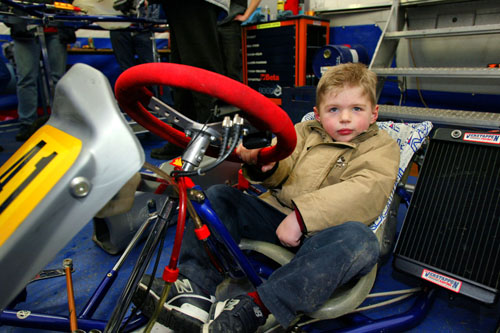
Little Max Verstappen
Max was born into a family of racing drivers. His father Jos Verstappen is a former Formula One driver while his mother Sophie Kumpen is a former successful kart driver. His grandfather Paul Kumpen is a former GT endurance driver and his uncle Anthony Kumpen is a FIA GT and 24 Hours of Le Mans driver. Through his parents he holds both Belgian and Dutch citizenship, and although he was born and raised in Belgium he decided to compete with a Dutch racing licence because he spent most of his time karting surrounded by Dutch people.
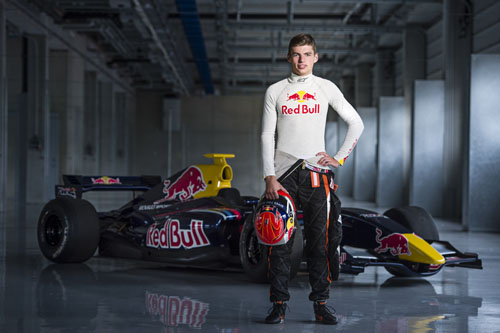
Max Verstappen poses for a portrait at the Red Bull Ring in Spielberg, Austria on August 12th, 2014
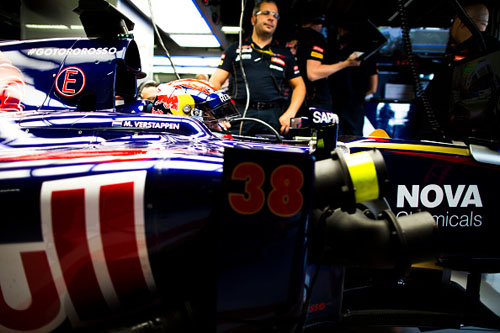
2014 – Max Verstappen of Toro Rosso and The Netherlands during practice for the Japanese Formula One Grand Prix at Suzuka
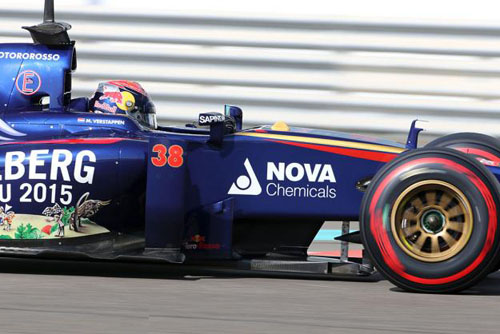
2014 – Max Verstappen at Abu Dhabi
In August 2014, Verstappen joined the Red Bull Junior Team after testing a Formula Renault 3.5 car. He also considered an offer from Mercedes to join their driver development programme. Six days later, he was confirmed as one of Scuderia Toro Rosso’s drivers for the 2015 season. It was confirmed that Carlos Sainz Jr. would be Verstappen’s teammate, following Daniil Kvyat’s promotion to Red Bull Racing. Verstappen chose 33 as his race number.
By taking part in the first free practice at the 2014 Japanese Grand Prix, Verstappen became the youngest driver to take part in a Grand Prix weekend, as part of his preparation for a full-time place with Scuderia Toro Rosso in 2015.
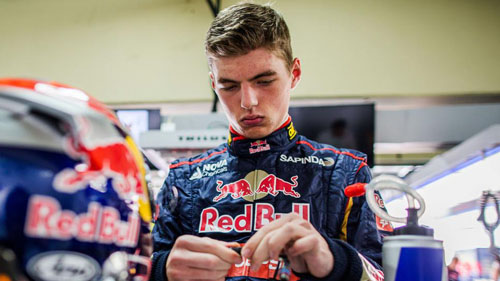
2014 – Max Verstappen
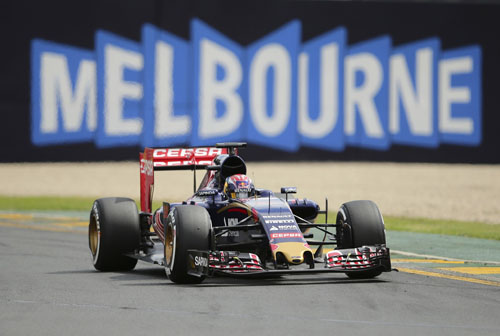
2015 – Max Verstappen at GP Australia
In January 2015, the FIA launched a new super licence system for Formula One, raising the age limit to 18 from the 2016 season onwards. Verstappen became the youngest driver to start a World Championship race by joining the sport a year before this licence restriction, in his Grand Prix debut as a full-time driver at the 2015 Australian Grand Prix at the age of 17 years, 166 days – breaking Jaime Alguersuari’s existing record by almost two years. In this first race, Verstappen won points-scoring positions until he was forced to retire due to an engine failure. However, at the subsequent race in Malaysia, Verstappen qualified sixth and finished the race in seventh place, scoring his first Formula One points aged 17 years, 180 days, breaking the record of youngest driver to score World Championship points. After that he then failed to finish with points in China, due to engine failure in the last lap, Bahrain, due to electrical issues, Spain, settling for 11th.
At the 2015 Monaco Grand Prix, Verstappen was involved in a high-speed collision with Romain Grosjean, after clipping the back of the Lotus on the approach to Sainte Devote and flew nose-first into the barriers at high speed. Verstappen was given a five-place grid penalty for causing the accident, and was branded “dangerous” by Williams driver Felipe Massa – although Verstappen hit back at Massa by pointing out he had himself been involved in a similar incident with Sergio Pérez at the 2014 Canadian Grand Prix.
Verstappen continued to regularly finish in the points as well as achieving his best finish of the 2015 season in Hungary by finishing 4th and equaled this result at the United States Grand Prix. At the end of the season, Verstappen received three awards at the FIA Prize Giving Ceremony, for Rookie of the Year, Personality of the Year and Action of the Year for his overtake on Felipe Nasr through the outside of the Blanchimont corner at the Belgian Grand Prix.
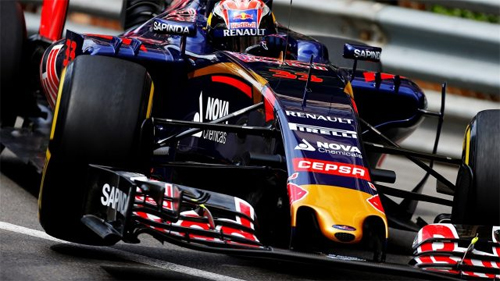
2015 – Max Verstappen at Scuderia Toro Rosso
Verstappen began the 2016 season at Toro Rosso, again alongside Sainz. Verstappen qualified fifth for the opening race of the season in Australia, but during the race made several radio calls to his team due to frustration at being behind Sainz on track before clipping his teammate whilst attempting to pass him with three laps to go, and he eventually finished tenth. Verstappen enjoyed a more successful weekend at the following race in Bahrain, finishing sixth to score Toro Rosso’s first ever points at the Sakhir circuit.
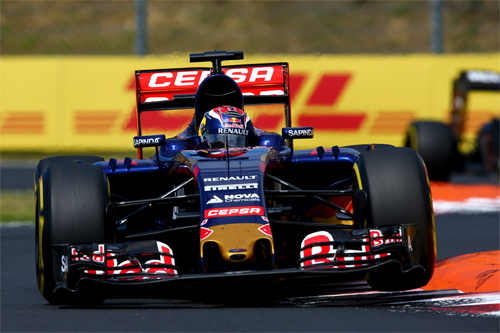
2016 – Max Verstappen started the season at Scuderia Tor Rosso
Following the Russian Grand Prix, Red Bull announced that Verstappen would be replacing Daniil Kvyat for the 2016 Spanish Grand Prix, with Kvyat returning to Toro Rosso. According to Red Bull Team Principal Christian Horner, “Max has proven to be an outstanding young talent. His performance at Toro Rosso has been impressive so far and we are pleased to give him the opportunity to drive for Red Bull Racing.”
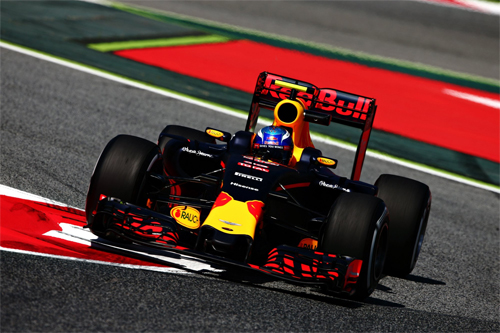
2016 – Max Verstappen moved to the Red Bull team at the Spanish Grand Prix
After qualifying fourth for the Spanish Grand Prix, Verstappen rose to second behind teammate Daniel Ricciardo on the opening lap after Mercedes teammates Lewis Hamilton and Nico Rosberg crashed out of the race. Verstappen took the race lead as he was placed on a two-stop rather than the same three-stop strategy as Ricciardo, and he held off Ferrari’s Kimi Räikkönen in the later stages of the race to take his first Formula One victory. By doing so he displaced Sebastian Vettel as the youngest driver ever to win a Formula One Grand Prix at the age of 18 years and 228 days.
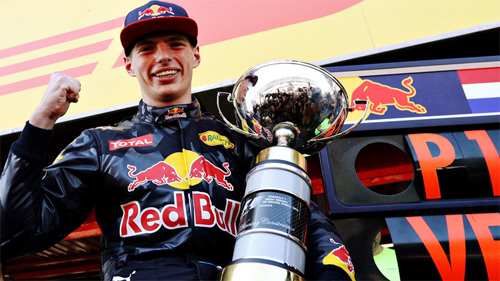
2016 – Max Verstappen wins his first Grand Prix in Formula One at his debut at Red Bull in Spain.
In his first eight races with Red Bull he achieved six top-five finishes, including four podiums.
During the Belgian Grand Prix, Verstappen collided with Räikkönen at the first corner, pushed Vettel, Räikkönen and Pérez wide at Les Combes, and aggressively blocked Räikkönen on the Kemmel straight. Verstappen was criticized for his driving, with Räikkönen saying that he “was going to cause a huge accident sooner or later”; Verstappen’s boss, Horner, said that the driving was “on the edge”, and that “Verstappen will learn from Belgium”. On 2 September 2016 F1 director Charlie Whiting called in Verstappen for a discussion. Whiting gave Verstappen a gentle warning because of his aggressive driving. However, in October drivers’ concerns about Verstappen’s defensive tactics led the FIA to disallow moving under braking.
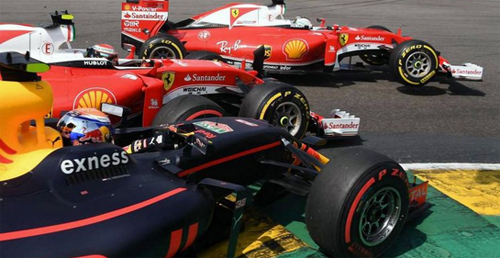
2016 – Max Verstappen battles with Vettel and Räikkönen at the Belgium Grand Prix.
At the 2016 Brazilian Grand Prix, Verstappen qualified fourth. In a rain affected race, he barely managed to avoid hitting the guardrail when he spun on the main straight. After an additional tire change from intermediates back to rain tires, he ran in 16th place with just 15 laps remaining. Verstappen then made several overtakes in the closing laps to eventually finish on the podium in third place. He received considerable praise for his performance, with his team principal Christian Horner calling it “one of the best drives I’ve seen in Formula One”. However, he came under criticism from Sebastian Vettel, who claimed that Verstappen had pushed him off the track when he gained a position on him at Junção corner late in the race. The race stewards did not share Vettel’s view and decided that no reprimand was warranted.
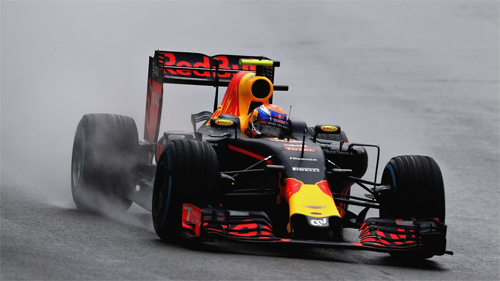
2016 – Max Verstappen was praised for his car control during the rainy Brazilian Grand Prix.
During the first 14 races of the 2017 season, Verstappen suffered seven retirements, four due to mechanical issues, and three due to first lap collisions in Spain, Austria and Singapore. Of the races finished, however, he claimed a third place in China, and another five races classified fourth or fifth.
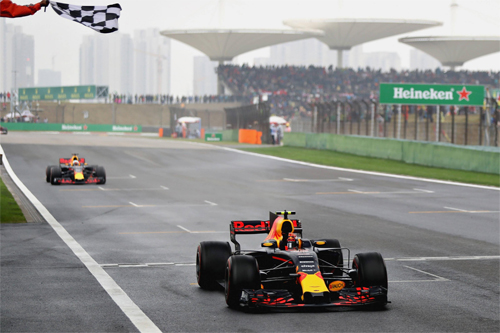
2017 – Max Verstappen takes 3 place in China
From the Malaysian Grand Prix onward, Verstappen enjoyed a surge of success. He won his second Formula One race at the 2017 Malaysian Grand Prix, one day after his 20th birthday, passing Lewis Hamilton for the lead in the early stages of the race. He finished second in the following race in Japan. He then finished third at the United States Grand Prix, but was classified fourth after his final lap overtake on Kimi Räikkönen was deemed illegal. He then won his third Formula One race (and second in 2017) at the Mexican Grand Prix, after passing Sebastian Vettel on the opening lap and leading until the end of the race.
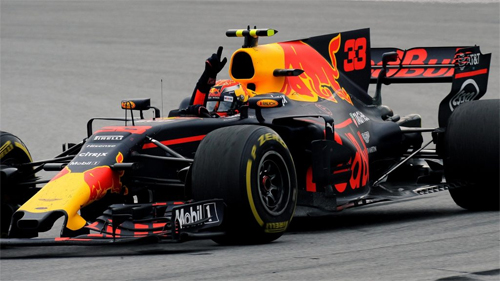
2017 – Max Verstappen takes his second Formula One victory at the Malaysian Grand Prix
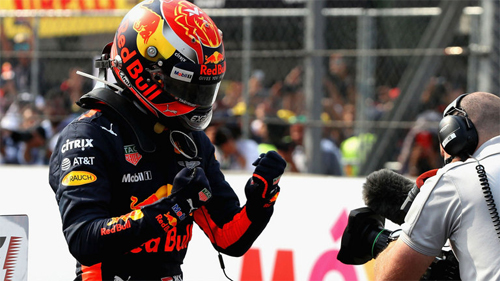
2017 – Max Verstappen takes his third Formula One victory at the Mexican Grand Prix
In the first 6 races of the 2018 season, Verstappen had been involved in at least one incident in each race. In Australia, he qualified 4th, but fell behind Kevin Magnussen at the start. In his attempts to retake the position he ran wide multiple times and damaged his car. He then spun at Turn 1 and fell behind Romain Grosjean, a recovering Ricciardo and Nico Hülkenberg. He then managed, due to strategy and the retirement of the Haas cars to salvage 6th place, coming home behind Fernando Alonso, who had jumped him in the virtual safety car period. At the next race in Bahrain, he crashed during qualifying and started in 15th place. He had a productive first lap after which he found himself in the points while challenging Lewis Hamilton. He attempted an overtake on the reigning World Champion at the start of lap two, but collided with the Mercedes driver and suffered a puncture that ultimately led to suspension damage which forced him out of the race.
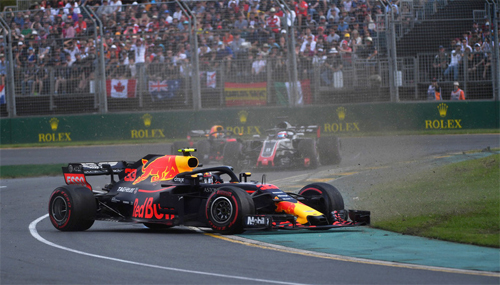
2018 – Max Verstappen at the Australian Grand Prix
At the next race, in China, he qualified 5th and had moved up to 3rd at the end of the first lap. Both Verstappen and teammate Ricciardo pitted for fresh tyres during the safety car and left them with a tyre advantage over the front-runners ahead. Verstappen tried to overtake Lewis Hamilton around the outside of Turn 6 but ran wide and off the track, resulting in Ricciardo overtaking him. Once he had dispatched of Hamilton for 4th place, he tried to take 3rd from Sebastian Vettel but he collided with the championship leader, causing him to fall to 8th, while receiving a 10-second penalty. Following this he, once again, passed the struggling Mercedes of Hamilton for 4th and finished in that position. However, he still finished 5th due to his 10-second penalty. Meanwhile, his teammate Ricciardo went on to win the race.
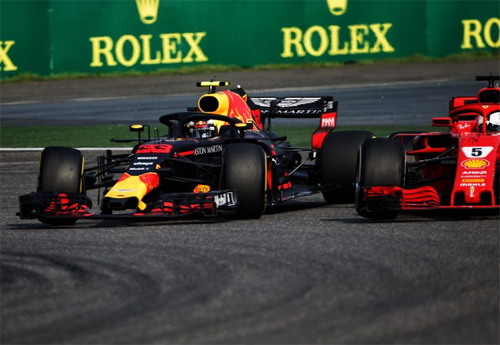
2018 – Max Verstappen in China
At the Azerbaijan Grand Prix, he was embroiled in a race-long battle with Ricciardo for 4th place. After the Australian had beaten him to 4th on the grid, Verstappen seized the position following an early safety car restart. Ricciardo challenged many times for the place and eventually succeeded in passing his teammate. However, Ricciardo, supposedly on the more favourable strategy, fell behind Verstappen after the pit stops. He then tried another overtake but Verstappen aggressively defended and ran into the back of the Dutchman’s car, causing the retirement of both. The team blamed both drivers and the stewards reprimanded both drivers.
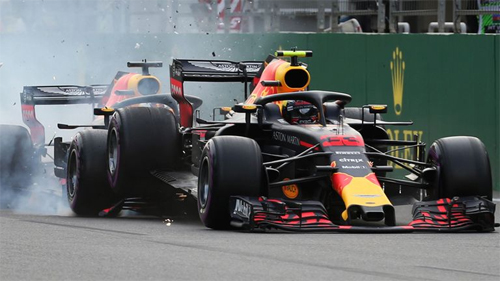
2018 – Verstappen collides with team mate Ricciardo at the Azerbaijan Grand Prix
Verstappen bounced back in Spain with his first podium of the season by finishing 3rd behind the Mercedes cars, holding off Sebastian Vettel. However, the race was also not without incident as he had run into the back of Lance Stroll during the virtual safety car period, damaging his front wing. The damage his car was not severe and he held on to 3rd place.
In Monaco, Verstappen made another error when he crashed near the end of the third free pactice session in an incident which closely resembled a crash he had at the same spot two years earlier. His team could not repair his car in time for qualifying and he had to start last on a track which is notoriously difficult to overtake on. Verstappen managed to salvage 2 points by finishing 9th place, overtaking 6 cars on track. Team principal Christian Horner commented on Verstappen’s start of the season, saying he “needed to stop making these mistakes” and that he could “learn from his teammate”, while Dr Helmut Marko, head of driver development at Red Bull, said that Verstappen was “too impatient”. Verstappen, following Monaco, lied in 6th place in the championship with 35 points, only 3 points ahead of Alonso in a much slower Mclaren, and 37 points behind his teammate in 3rd, who had taken two wins in the first 6 races.
At the 2018 Canadian Grand Prix, Verstappen topped all three practice sessions and qualified 3rd and was two tenths off pole position which was won by Sebastian Vettel. At the beginning of the race, Verstappen pushed Mercedes driver Valtteri Bottas for 2nd place. However a safety car was deployed during the middle of the 1st lap caused by a collision between Scuderia Toro Rosso driver Brendon Hartley and Williams Grand Prix Engineering driver Lance Stroll. He finished third in the race and set the fastest lap of the race on lap 65.
The 2018 French Grand Prix brought him second place. At the 2018 Austrian Grand Prix, on Red Bull’s home track, he started fourth on the grid, passed Kimi Räikkönen and taking advantage of retirement from Valtteri Bottas and a botched pit-stop strategy by Lewis Hamilton, who later had to retire in fourth place, he won the fourth race of his career.
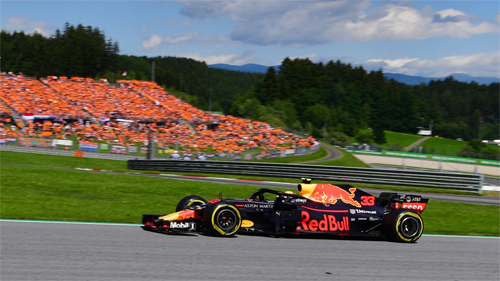
2018 – Max Verstappen wins in Austria!
In Austria—Red Bull’s home track, he started fourth on the grid, passed Kimi Räikkönen before taking advantage of retirement from Valtteri Bottas and a botched pit-stop strategy by Lewis Hamilton, who later had to retire from fourth place, to claim the fourth race victory of his career.
In Britain, Verstappen was plagued by issues, finishing the first practice session early due to a gearbox problem and crashing in the second practice session before retiring from the race due to a brake problem.
He would then finish fourth in Germany after strategy errors let a recovering Hamilton get past him as he went on to win the race.
Verstappen ended the first half of the season with a retirement in Hungary and was narrowly behind his teammate in the championship due to his own recent resurgence and Ricciardo’s unreliability.
Verstappen enjoyed a very strong second half of the season, achieving podium finishes in Belgium, Singapore, Japan and the United States, the latter of which he achieved second place having started from 18th on the grid due to a suspension failure in qualifying.
Following the qualifying session at the Mexican Grand Prix, Verstappen revealed that a mechanical problem with his Red Bull under braking cost him any chance of becoming the youngest-ever Formula One pole-sitter. As a result, Ricciardo beat Verstappen to pole position by just 0.026 seconds. Verstappen had a better start than Ricciardo and took the lead of the race into the first corner, overtaking the fast-starting Mercedes of Lewis Hamilton. Verstappen earned his fifth career win in Mexico.
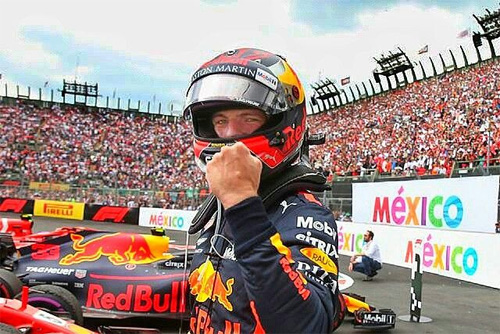
2018 – Max Verstappen wins in Mexico!
He was poised to win the 2018 Brazilian Grand Prix, having overtaken Räikkönen, Vettel, Bottas, and Hamilton. However, he collided with Force India driver Esteban Ocon who was trying to unlap himself on faster tyres. Ocon received a 10-second stop-and-go penalty for the incident. After the collision with Ocon, Verstappen finished in second place behind Hamilton. During an argument with Ocon after the race, Verstappen pushed the Force India driver, for which he was given two days of “public service” as a penalty by the FIA. He then finished his season with another podium as he finished third in Abu Dhabi.
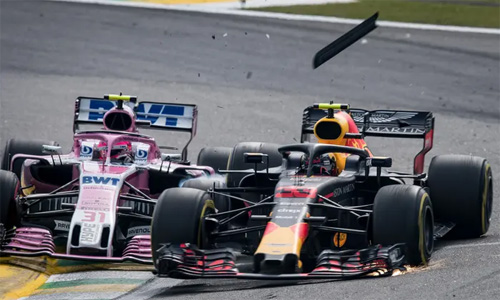
2018 – Max Verstappen collides with Esteban Ocon in Brazil.
Verstappen ended the 2018 season in fourth place in the championship with 249 points, claiming two wins, eleven podium finishes, and two fastest laps.
—-
In 2019 Red Bull switched from Renault to Honda power units. After Ricciardo moved to the Renault team for 2019, Verstappen was joined at Red Bull by Pierre Gasly. Verstappen qualified in fourth and finished third in Australia, the first podium finish for a Honda-powered driver since the 2008 British Grand Prix.
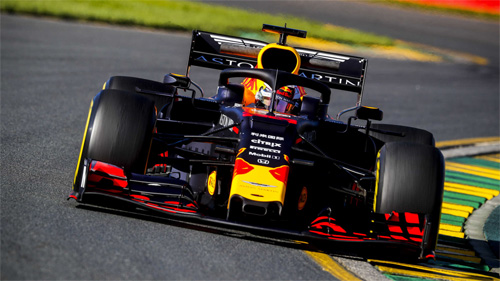
2019 – Max Verstappen finishes third in Australia.
Verstappen was on course for a second third-place finish in Bahrain before a late safety car prevented him from overtaking Charles Leclerc’s ailing Ferrari, keeping him in fourth place.
Two more fourth-place finishes followed in China and Azerbaijan, and a podium in Spain in third place.
In Monaco, Verstappen qualified in third place. He was released into the path of Valtteri Bottas during the drivers’ pit stops, gaining second place but receiving a 5-second penalty as a result. Verstappen crossed the line in second place but was demoted to fourth by the penalty.
In Canada, Verstappen’s final lap in the second qualifying session was hampered by a red flag brought out by Kevin Magnussen’s crash. This caused Verstappen to qualify 11th and start the race in ninth place.
He later recovered to finish fifth.
In France he started and finished in fourth place. In Austria, Verstappen started third but suffered a poor start, dropping down to eighth. After a charge towards the front, he made his way up to second before controversially passing Leclerc for the lead of the race with three laps to go.
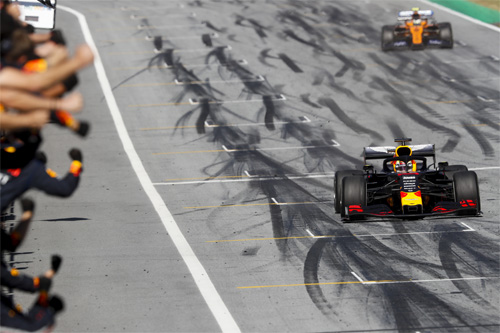
2019 – Max Verstappen wins in Austria.
This marked the first Honda-powered race victory since the 2006 Hungarian Grand Prix.
In Britain, Verstappen, running in third place, was hit from behind during an overtake attempt by Sebastian Vettel and spun into the gravel. Verstappen was able to continue and crossed the line in fifth place.
The wet and chaotic German Grand Prix began similarly to the race in Austria for Verstappen, as a poor start caused him to fall behind. However, he would inherit the lead midway through the race after a crash by race leader Hamilton. Verstappen would go on to extend his lead after the track began to dry, claiming his second victory of the season.
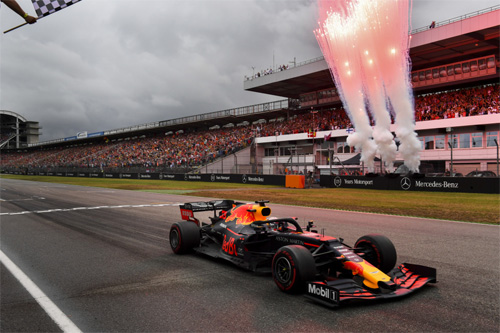
2019 – Max Verstappen wins in Germany.
In Hungary, he claimed the first pole position of his career and led most of the race before being passed in the closing laps by Hamilton, who had made another stop for fresh tyres in a gamble to catch the leader.
Before the Belgian Grand Prix, Verstappen received a new teammate in Alexander Albon after Pierre Gasly was demoted back to Toro Rosso. In the race, Verstappen had a poor start and collided with Kimi Räikkönen at the first corner, resulting in suspension damage and causing Verstappen’s first retirement of the season.
In Italy, he did not set a time during qualifying after his car lost power in Q1, but he was already required to start from the back of the grid due to an engine component penalty. After damaging his front wing on the first lap, he recovered to finish the race in eighth place. A third and fourth-place finishes followed in Singapore and Russia respectively.
After suffering damage in a first-lap collision with Charles Leclerc in Japan, Verstappen suffered his second retirement of the season.
In Mexico, he qualified in first place after setting the fastest lap-time of the session, before being handed a grid penalty for ignoring yellow flags after a crash by Valtteri Bottas. Verstappen suffered a puncture early in the race after making contact with Bottas, falling to the back of the field before eventually recovering to sixth place.
A third-place finish in the United States followed, before Verstappen took the second pole position of his career with a 1:07.508 pole lap time in Brazil. In a chaotic race, he passed Lewis Hamilton for the lead on two occasions before going on to claim his third victory of the season. Verstappen ended the season with a second-place finish in Abu Dhabi.
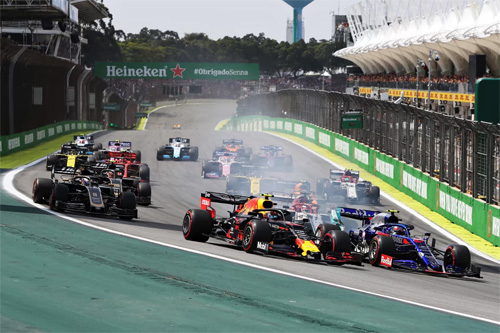
2019 – Max Verstappen wins in Brazil.
Verstappen finished the 2019 season in third place in the championship with 278 points. He claimed three race victories, nine podium finishes, two pole positions, and three fastest laps.
—-
In 2020, Verstappen signed a contract extension to race for Red Bull until the end of 2023.
Verstappen continued to race for Red Bull in 2020, alongside Albon. At the 2020 Austrian Grand Prix, he started second, but retired early in the race after a flywheel-related problem caused an electronic issue within the power unit. Honda introduced countermeasures in response to the retirement.
At the 2020 Hungarian Grand Prix, he crashed in wet conditions during the formation lap while he was on his way to the starting grid, but he was able to drive the car back to the grid where his mechanics fixed the suspension of the car in the short time that was left before the start of the race. After the repairs, Verstappen progressed from seventh place on the grid to second place by the end of the race. Verstappen won the 70th Anniversary Grand Prix at Silverstone, having started from fourth.
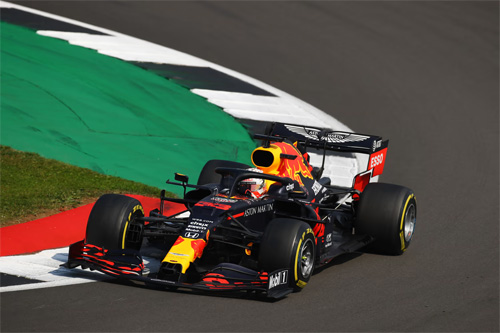
2020 – Max Verstappen wins in Silverstone!
Verstappen clinched second place at the Spanish Grand Prix, after qualifying in third.
At the 2020 Belgian Grand Prix, he scored a podium in third place, following his third place on the starting grid.
He suffered from two consecutive DNFs at the Italian and Tuscan Grands Prix after which he lost second place in the Championship.
At the Russian Grand Prix, Verstappen finished the race in second, his seventh podium finish of 2020.
At the Eifel Grand Prix, Verstappen finished in second after qualifying in third. He also managed to get the fastest lap of the race.
At the Portuguese Grand Prix, Verstappen qualified third, however a poor first lap meant that he dropped back down the order to fifth place. He recovered to third and took his 40th podium in Formula 1. At the Emilia Romagna Grand Prix, Verstappen looked set to claim second due to Valtteri Bottas’ ailing Mercedes slowing down, but a sudden puncture denied him any chance of a podium finish; Verstappen spun, resulting in his fourth retirement of the 2020 season.
During Free Practice for the Portuguese Grand Prix, Verstappen was criticised for comments he made on the team radio after a collision with Lance Stroll, where he used the words “retard” and “mongol” in response to the clash. Verstappen admitted following the session that the word choices he used were “not correct.” The Mongolian government and the Mongol identity asked Verstappen to apologise for the comments; the Mongolian government also urged the FIA to take action on the comments he made.
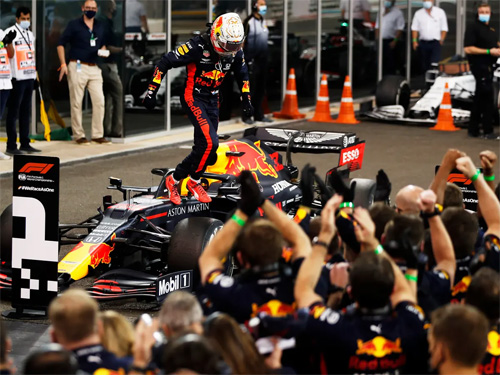
2020 – Max Verstappen wins in Abu Dhabi!
Verstappen finished the 2020 season in third place in the championship with 214 points. He claimed two race victories, eleven podium finishes, one pole position, and three fastest laps.
——
At first race of the 2021 season, the Bahrain Grand Prix, Verstappen topped all the practice sessions and subsequently took a career fourth pole position. This was the first time he achieved back-to-back pole positions. He fought Lewis Hamilton for the race victory, and on lap 53 Verstappen overtook Hamilton, but went off track whilst doing so, resulting in him being instructed by race control to let Hamilton back into the lead and ultimately finishing second behind Hamilton.
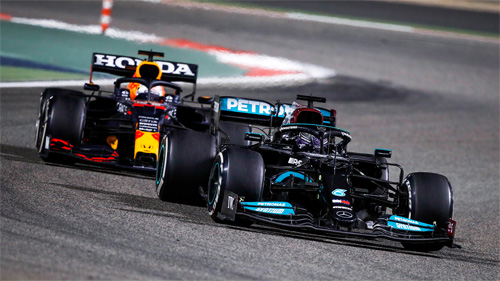
2021 – Max Verstappen finnishes second behind Lewis Hamilton in Bahrein.
At the next race, the Emilia Romagna Grand Prix, Verstappen qualified third with teammate Sergio Pérez second, marking the first time he was out-qualified by a teammate since the 2019 Italian Grand Prix. At the race start, Verstappen was able to pass both Pérez and pole-sitter Lewis Hamilton to take the lead. He remained in the lead after the first round of pit stops as well as the restart, following the race being suspended on lap 33. Rival Hamilton finished second, reducing his championship lead over Verstappen to one point.
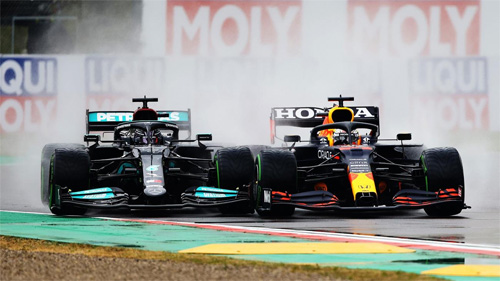
2021 – Max Verstappen wins Emilia Romagna Grand Prix!
In the following Portuguese Grand Prix, Verstappen finished second after a long battle with Lewis Hamilton.
At the Spanish Grand Prix, the battle between Verstappen and Hamilton continued, with Hamilton employing a faster two-stop strategy versus Verstappen’s one-stop race. This provided Hamilton the advantage of faster tyres, allowing him to overtake Verstappen with several laps remaining in the race. Hamilton took the victory, with Verstappen taking second and the fastest lap, increasing Hamilton’s championship lead to 14 points.
At the next race in Monaco, Verstappen qualified second behind Charles Leclerc, but Leclerc suffered a driveshaft failure on the way to the grid and was unable to start the race. Verstappen controlled the race from the front on the way to victory. Hamilton (who qualified seventh) finished seventh, though claiming an extra championship point by setting the fastest race lap. The result enabled Verstappen to take the lead in the Drivers’ Championship for the first time in his career, by a margin of four points over Hamilton.
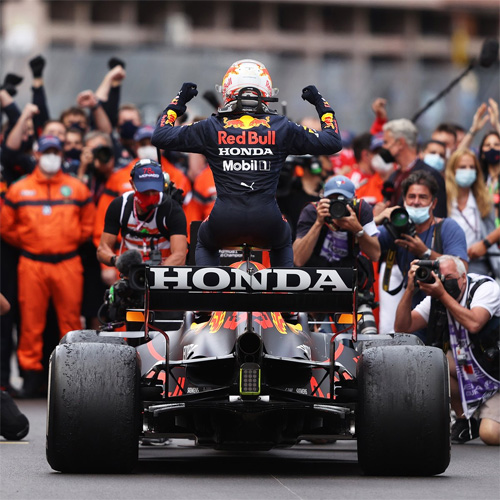
2021 – Max Verstappen wins in Monaco!
At the Azerbaijan Grand Prix, Verstappen qualified third behind Leclerc and Hamilton. Verstappen and Hamilton passed Leclerc in the opening laps before Verstappen took the lead by way of a faster pitstop. Verstappen would comfortably hold the lead until lap 46 when he suffered a tyre failure causing him to crash at high-speed and retire. A mistake by Hamilton on the restart dropped him to last place, meaning Verstappen maintained his championship lead.
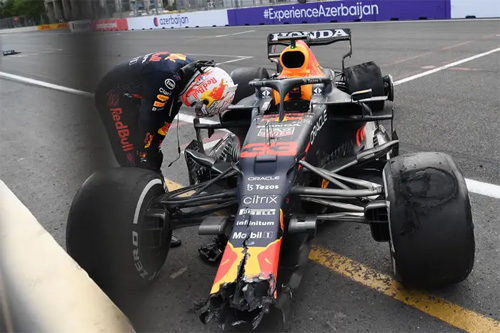
2021 – Max Verstappen crashes in Azerbaijan!
Verstappen took pole for the French Grand Prix. Verstappen’s mistake on the first lap allowed Hamilton to take the lead which Verstappen retook during the pit stop phase. Verstappen pitted for a second time from the lead and set after the Mercedes duo, overtaking Hamilton for the lead on lap 52 of 53. He also took the fastest lap point, extending his championship lead to twelve points. Verstappen clinched pole position again at the Styrian Grand Prix and led the race from start to finish, to give him his fourth win of the season and further extend his lead to 18 points.
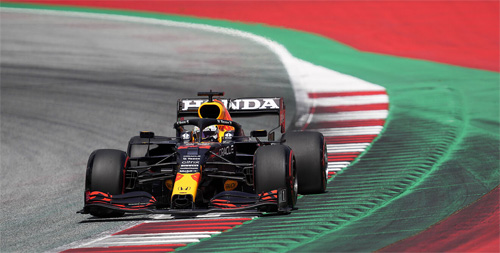
2021 – Max Verstappen wins the Styrian Grand Prix!
Verstappen took pole position at the Austrian Grand Prix, led every lap from start to finish, set the fastest lap, and won the race for his first career grand slam, being the youngest to do so. With the win, Verstappen also became the first driver to win three races in three consecutive weekends, starting at the French Grand Prix on 20 June, then the Styrian Grand Prix on 27 June and ending with the Austrian Grand Prix on 4 July.
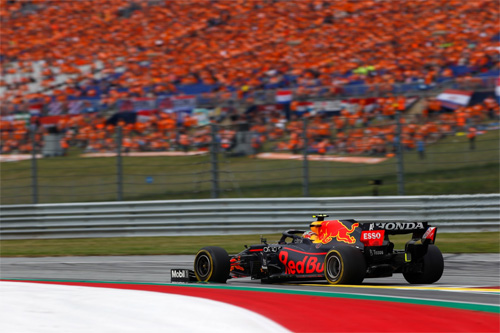
2021 – Max Verstappen wins in Austria!
At the next race; the British Grand Prix, Verstappen was involved in a high-speed collision at the Copse corner with Hamilton on the first lap. This resulted in a 51 g impact with the barrier. He was taken to the Silverstone circuit’s medical centre after the crash and was then taken to Coventry hospital for precautionary checks and further assessment, before eventually being discharged at 22:00 local time on Sunday night. Hamilton would go on to win the race, reducing Verstappen’s lead in the championship to eight points.
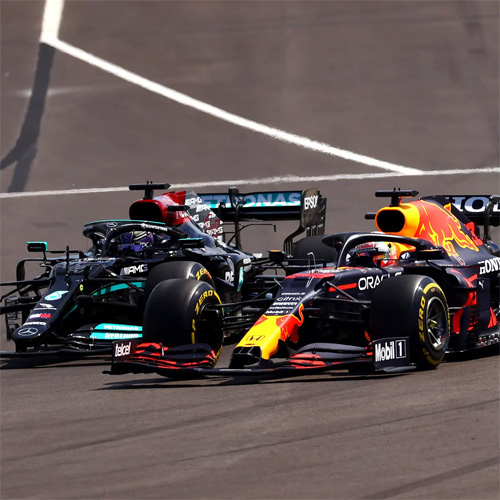
2021 – Max Verstappen crashes in Silverstone!
At the next race, the Hungarian Grand Prix, Verstappen’s car suffered damage in a multi-car collision on lap 1, where Mercedes driver Valtteri Bottas was deemed at fault. He ended the race in tenth which was promoted to ninth after Sebastian Vettel was disqualified. The outcome of the race allowed Hamilton to take the lead of the championship.
Following the summer break, Verstappen qualified on pole at the Belgian Grand Prix, ahead of Williams driver George Russell in second and Lewis Hamilton in third. The race was run for three laps, all behind the safety car, with the race official race results taken from the running order at the end of the first lap, with Hamilton and Verstappen both retaining their qualifying positions. As less than 75% of the race distance was completed, half points were awarded, resulting in Verstappen closing the gap to Hamilton to three points.
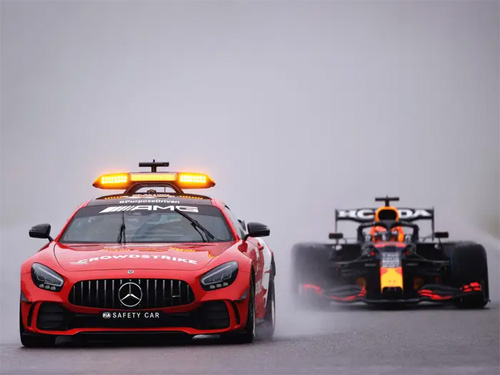
2021 – Max Verstappen wins in Belgium behind the safety car!
At the Dutch Grand Prix Verstappen again qualified on pole, beating Hamilton by 0.038 seconds. During the race Verstappen was able to fend off attacks from both Mercedes drivers to take the win, taking the lead in the Drivers’ Championship by three points.
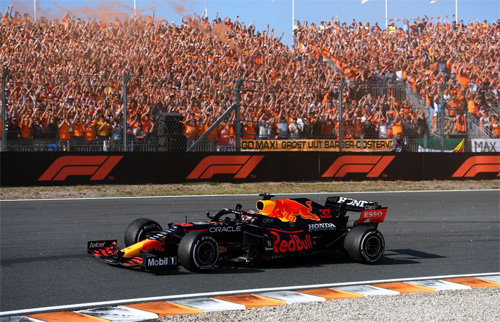
2021 – Max Verstappen wins the Dutch Grand Prix at Zandvoort!
The Italian Grand Prix was held at the Autodromo Nazionale Monza. Verstappen again started from pole. On lap 25, Verstappen and Hamilton collided after the latter had just left the pit lane, and both had to finish the race without points.
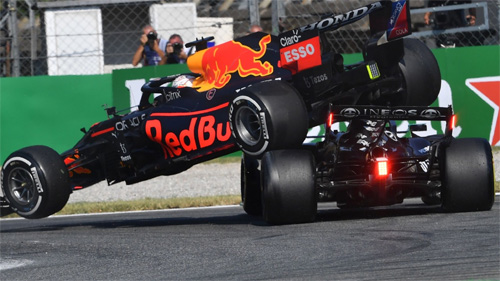
2021 – Max Verstappen crashes with Lewis Hamilton at Monza…
For the Russian Grand Prix, Verstappen was required to start at the back of the grid for exceeding his quota of power unit components. He made his way back up the field, and after taking an early pit stop for intermediate tyres late in the race, he finished second.
At the Turkish Grand Prix, Verstappen qualified second with Bottas on pole. With the race being run in wet conditions and the drivers on intermediate tyres the whole race, Verstappen finished second behind Bottas, taking the lead in the Drivers’ Championship by six points as Hamilton finished fifth.
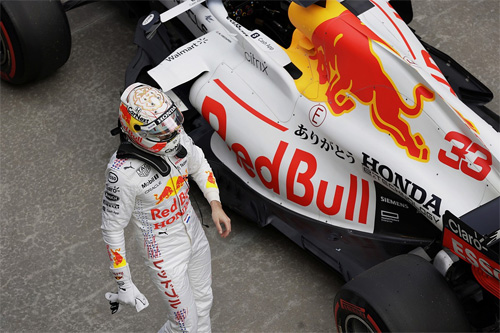
2021 – Max Verstappen at the Turkish GP.
The twin Red Bull Racing RB16B cars of Max Verstappen and teammate Sergio Perez will feature a predominantly white livery inspired by the legendary Honda RA 272 car, in which US racer Richie Ginther secured the company’s maiden Formula 1 win at the 1965 Mexican Grand Prix. The Red Bull cars were in white as a tribute to their outgoing racing partner Honda. The Japanese manufacturer will bid farewell to the Austrian team after seven years of providing its engine, as it bows out of F1. Driver numbers are also placed on red circle backdrops – a reference to the flag of Japan.
At the United States Grand Prix, Verstappen took pole position in qualifying, edging Hamilton by 0.209 seconds. Verstappen won the race and extended his lead in the Drivers’ Championship to twelve points as Hamilton finished second with the fastest lap.
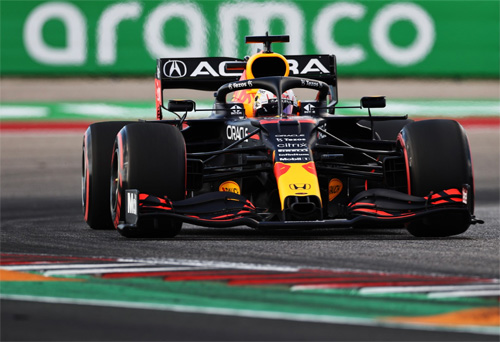
2021 – Max Verstappen wins the USA GP!
At the 2021 Mexico City Grand Prix, Verstappen qualified third with a gap to pole-sitter Bottas of 0.350 seconds. Verstappen’s main opponent Hamilton qualified second. At the race start, Verstappen took the lead from Bottas and Hamilton into turn 1 and won the race, and as a result extended his lead in the championship to 19 points.
Verstappen and Hamilton were on equal points in the Drivers’ Championship going into the final round, the Abu Dhabi Grand Prix, with Verstappen leading on countback. Verstappen overtook Hamilton on the final lap to win the race, and his first Formula One World Drivers’ Championship. Verstappen, who had qualified on pole position by nearly four tenths of a second, had a slow start off the line at the start of the race and dropped to second place. Verstappen was trailing Hamilton by over ten seconds until a late safety car was called in due to a crash at turn 14 involving Williams driver Nicholas Latifi. The withdrawal of the safety car and the resumption of the race following the safety car period was met with controversy. Race director Michael Masi allowed only a certain number of lapped cars through, which after the race brought from the Mercedes team a protest and stated intention to appeal against the race result, arguing that all lapped cars should be allowed through, Red Bull counter argued that this was not specified by the wording of the regulations. The protest was rejected, although subsequent investigation by the FIA ruled that Masi had misinterpreted the rule and the wording of the rule was amended for the 2022 season to specify that “all” cars will unlap themselves (at the race director’s discretion) rather than “any”.
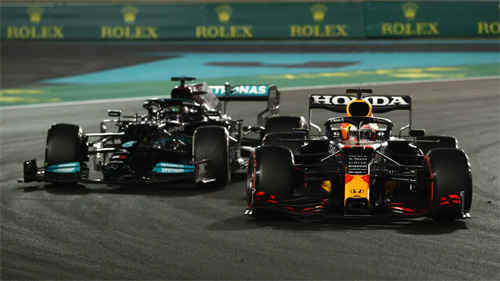
2021 – Max Verstappen wins in Abu Dhabi!
Verstappen passed Hamilton at turn 5 of the final lap of the race to become the 34th Formula One World Drivers’ Champion.
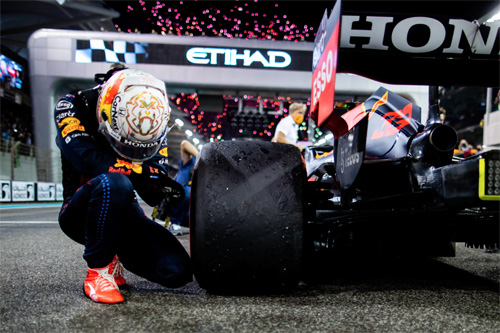
2021 – Max Verstappen after Abu Dhabi GP!
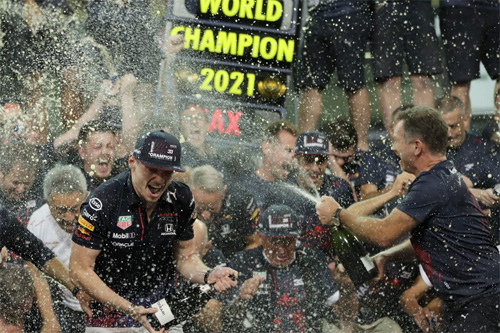
2021 – Max Verstappen becomes World Champion Formula One!
In March 2022 Verstappen signed a five-year contract extension with Red Bull Racing for the 2023 to 2028 seasons.
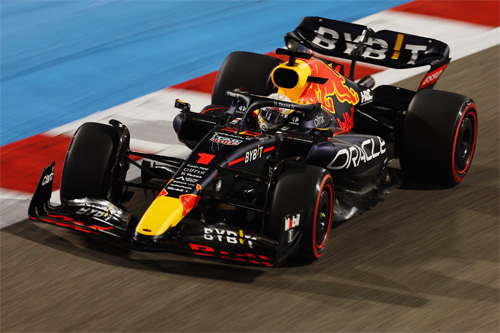
2022 – Max Verstappen at Bahrein GP
Verstappen suffered two fuel system related retirements in the first three races, finding himself 46 points behind championship leader Charles Leclerc. He responded by winning five of the next seven races, allowing him to take the championship lead and build a gap of 37 points over second place, by then held by his teammate Sergio Pérez.
More information on Max Verstappen on verstappen.nl.
Overview Dutch Formula One drivers:
Jan Flinterman (1952)
Dries van der Lof (1952)
Carel Godin de Beaufort (1957 – 1964)
Ben Pon (1962)
Rob Slotemaker* (1962)
Gijs van Lennep (1971 – 1975)
Roelof Wunderink (1975)
Boy Hayje (1976 – 1977)
Michael Bleekemolen (1977 – 1978)
Jan Lammers (1979 – 1992)
Huub Rothengatter (1984 – 1986)
Jos Verstappen (1994 – 2003)
Robert Doornbos (2004 – 2006)
Christijan Albers (2005 – 2007)
Giedo van der Garde (2008 – 2014)
Robin Frijns* (2013 – 2014)
Max Verstappen (2014 – …)
Nyck de Vries (2022 – …)



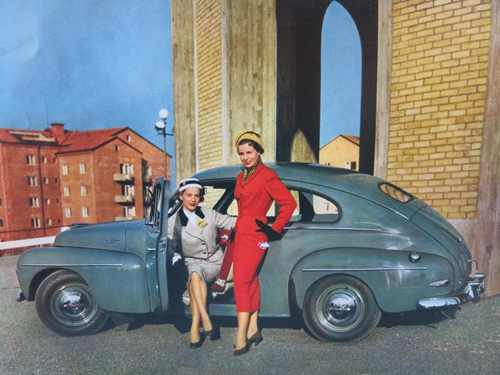

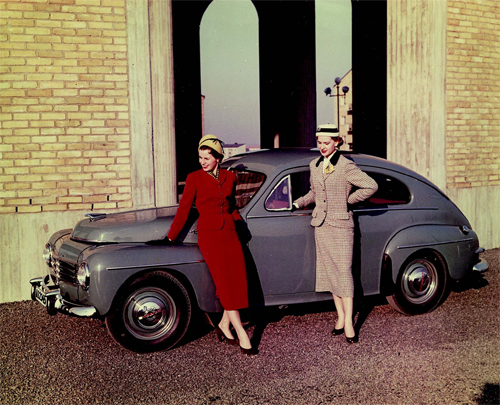



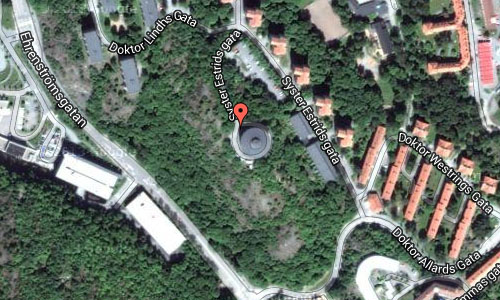
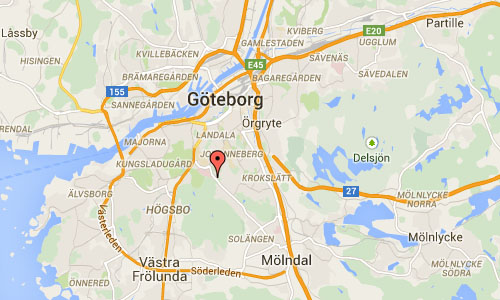

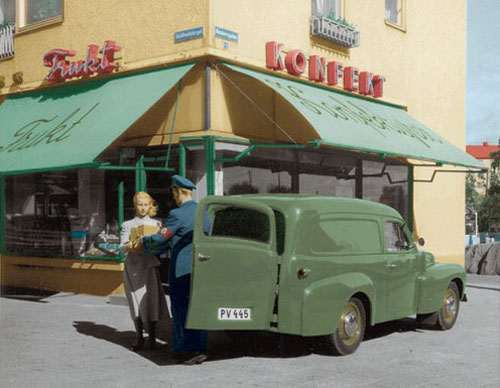
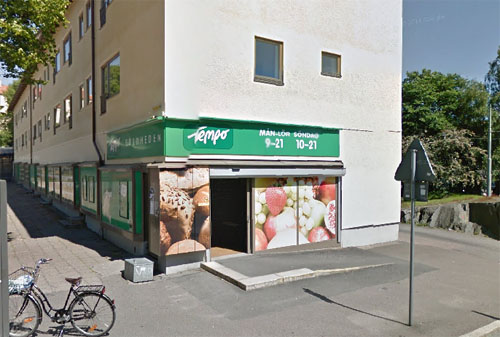

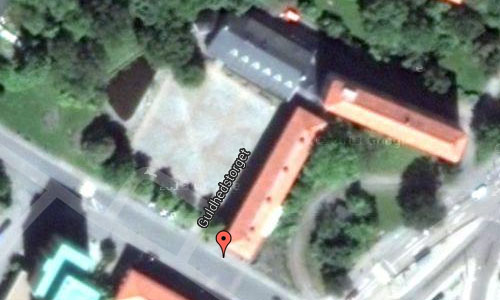
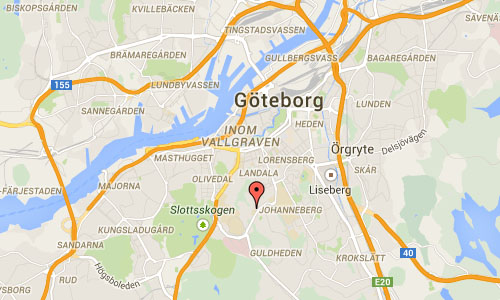
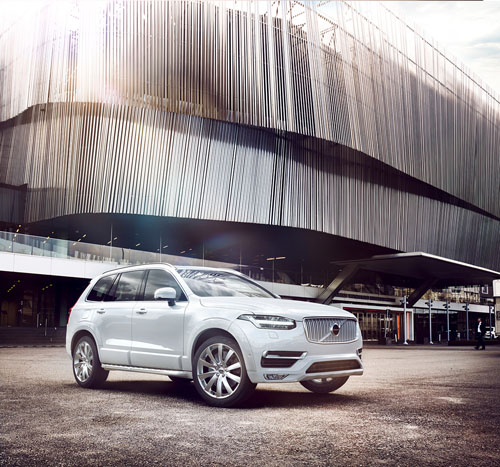
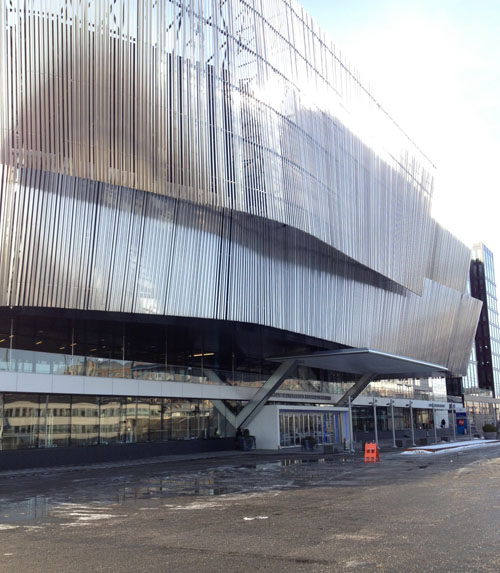

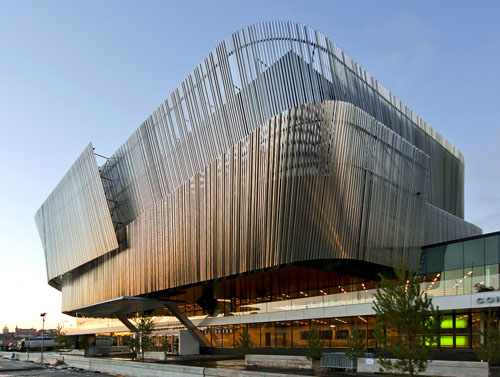
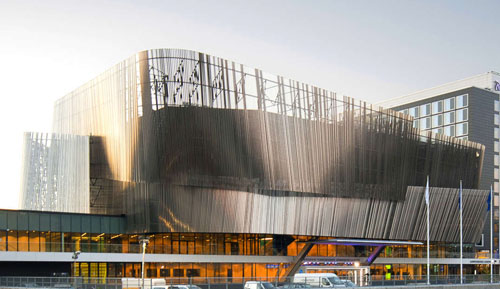

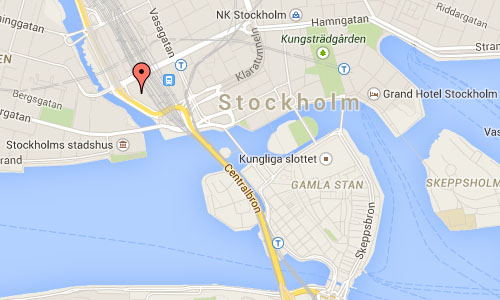











































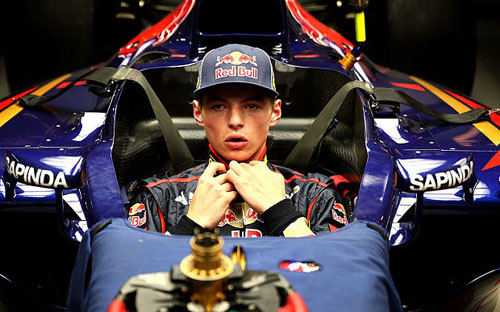
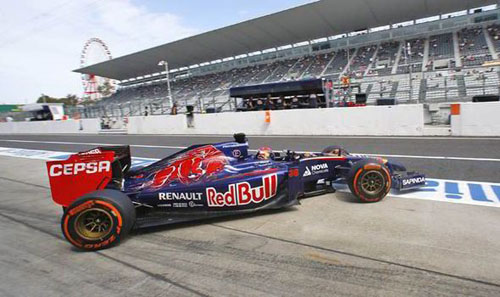
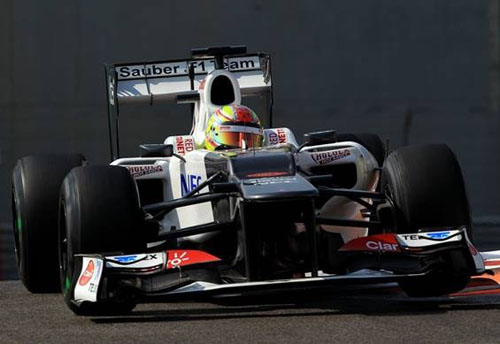
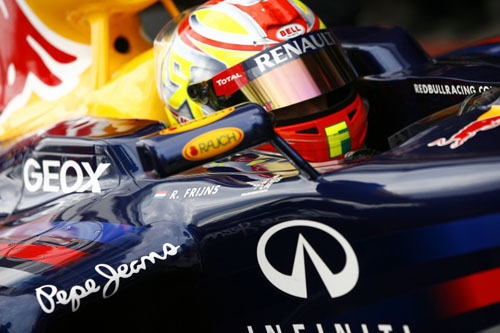
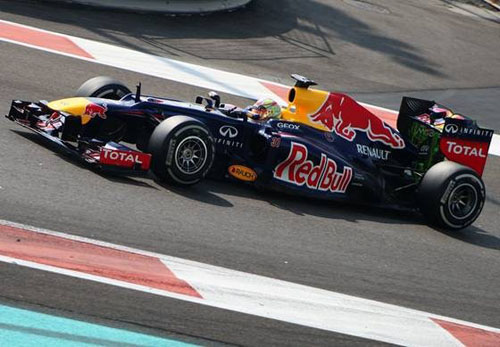
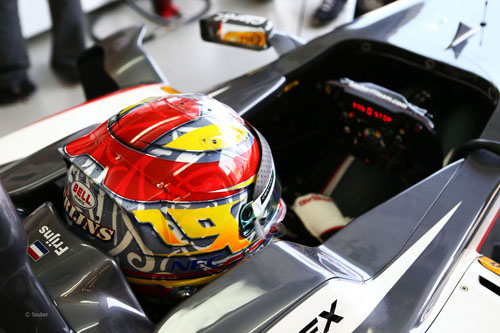
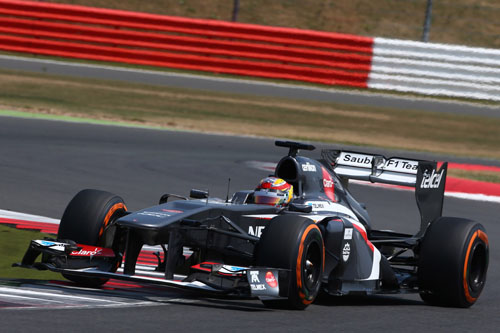
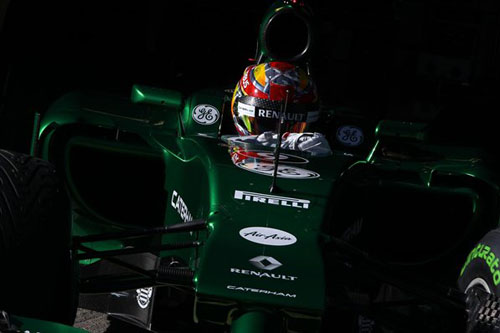
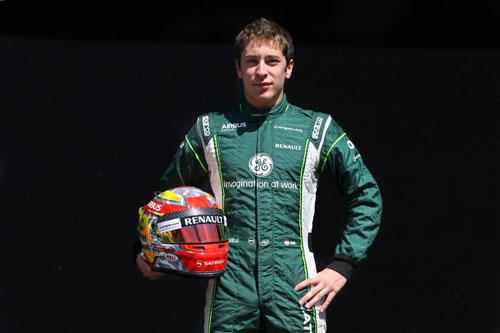
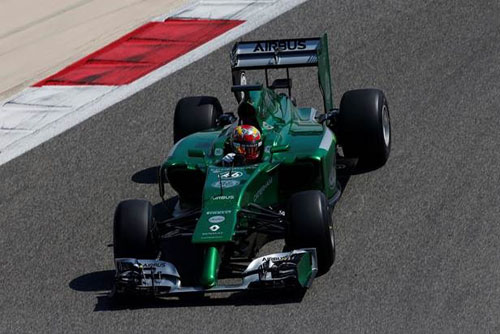
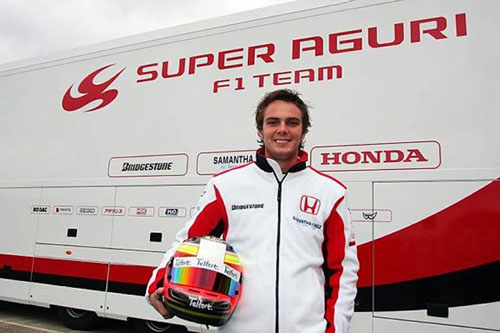
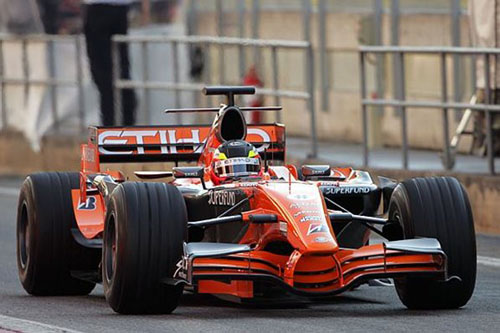
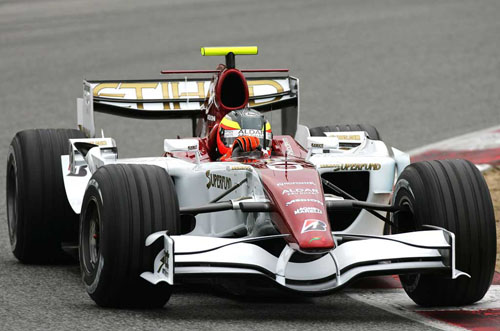
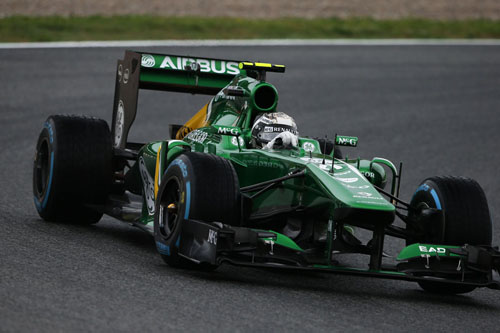
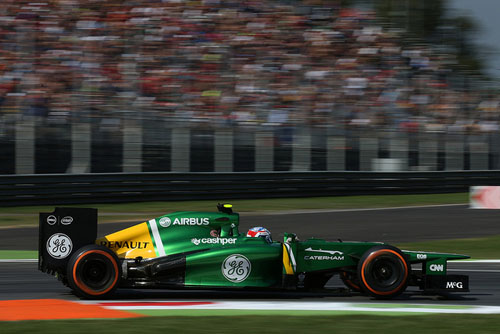
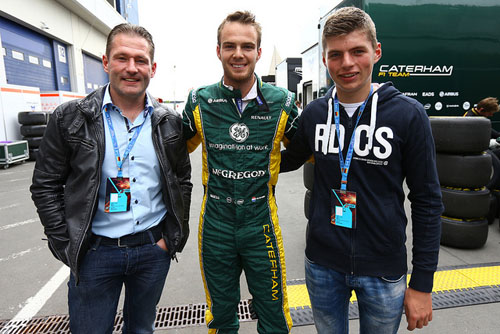
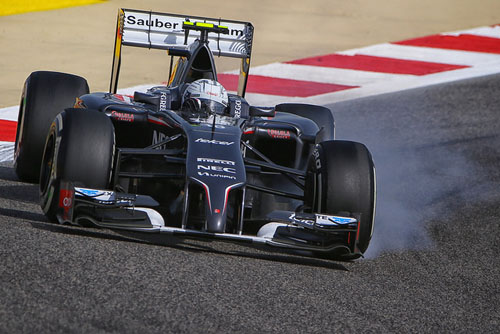
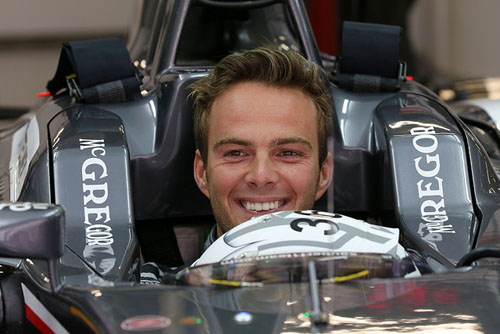
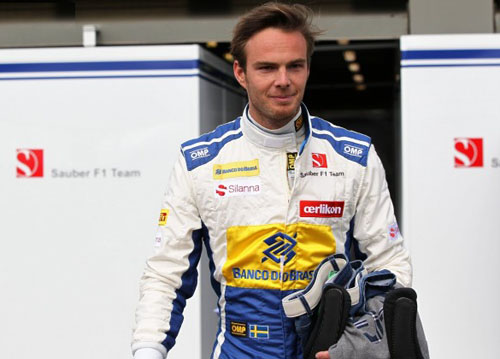
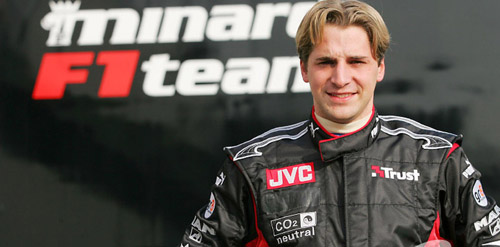
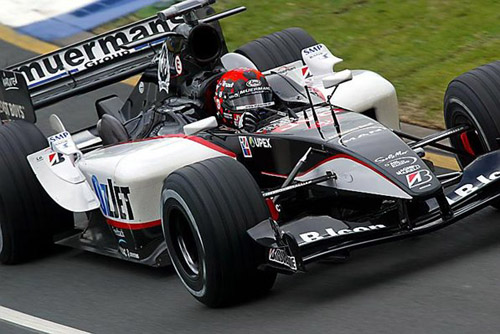
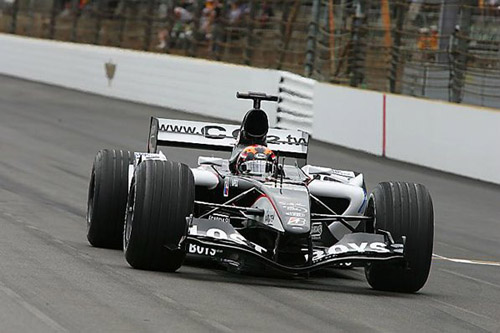
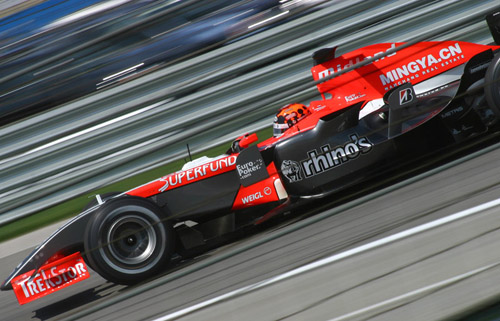
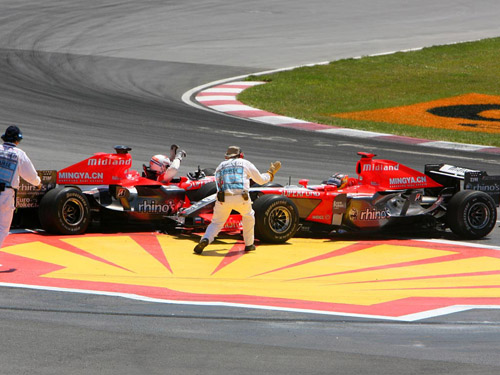
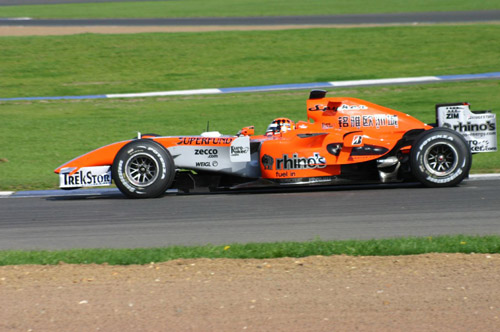
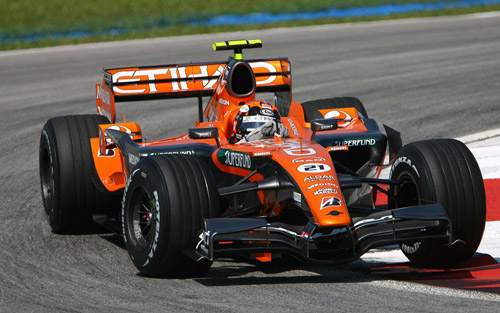
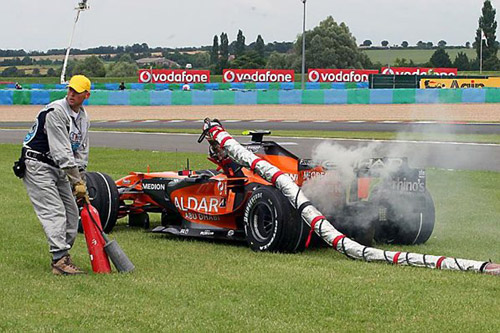
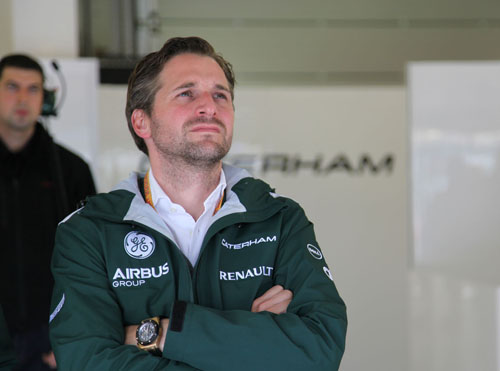
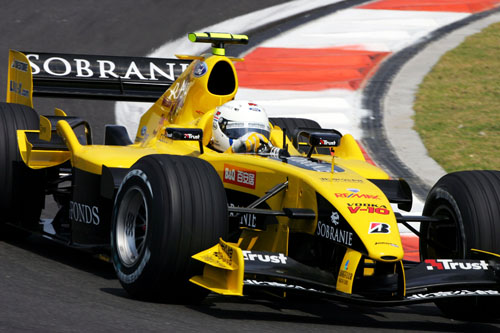
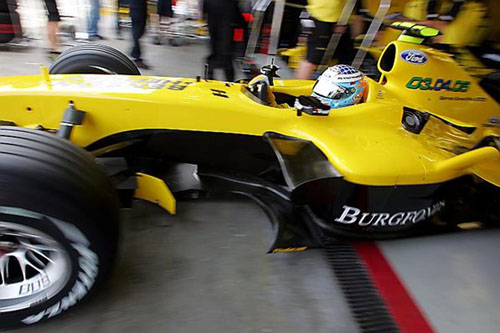
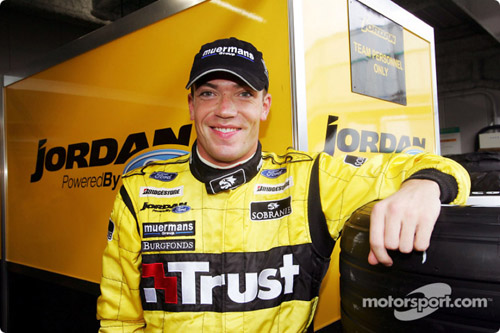
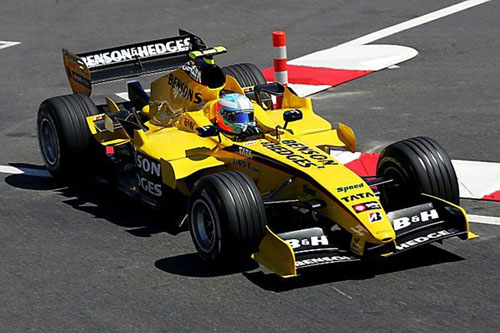
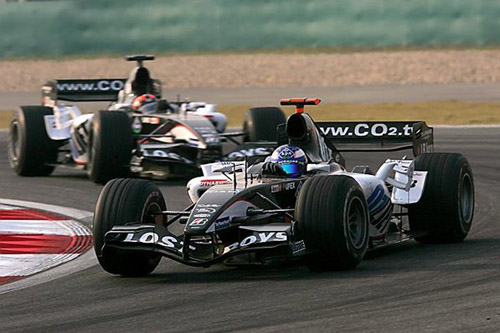
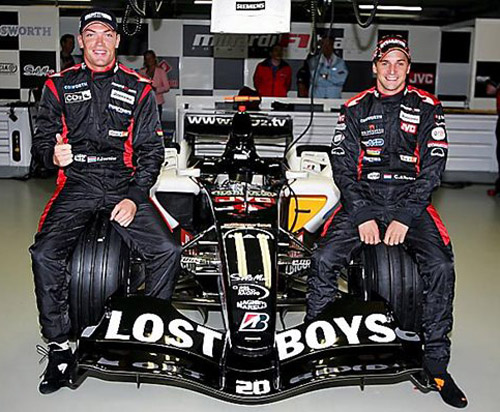
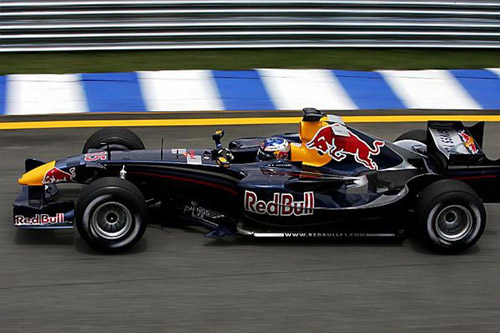
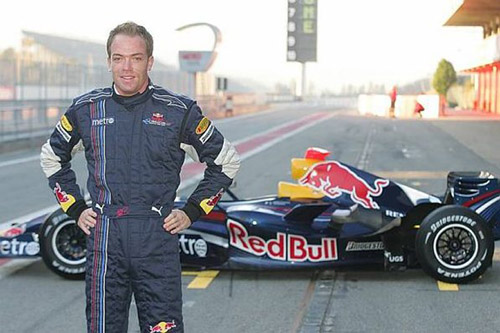
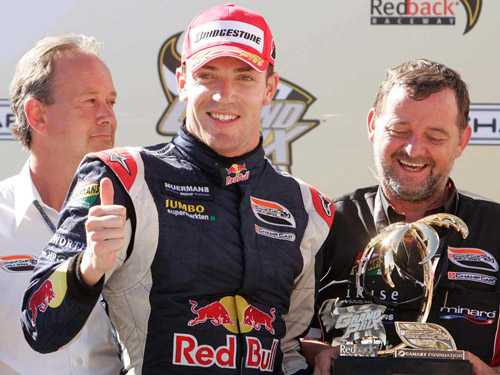
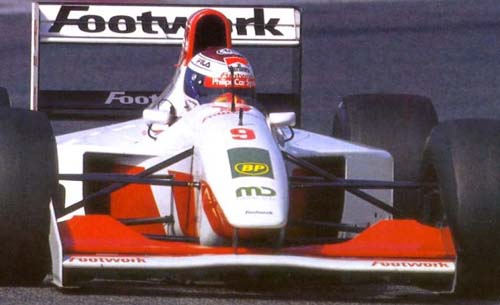
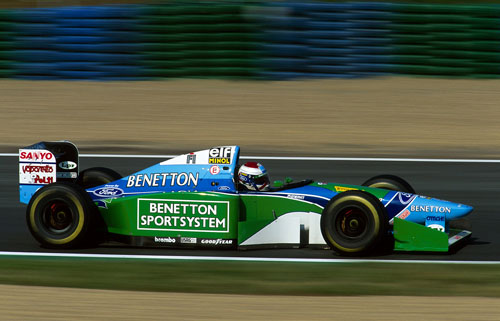
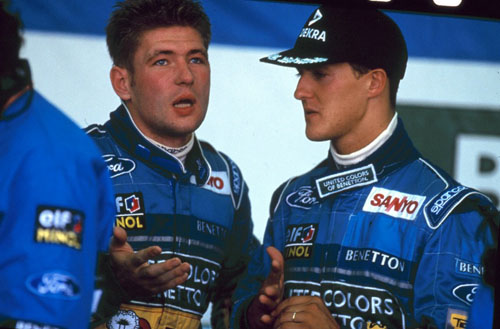
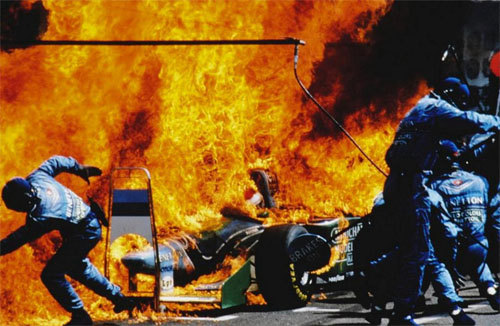
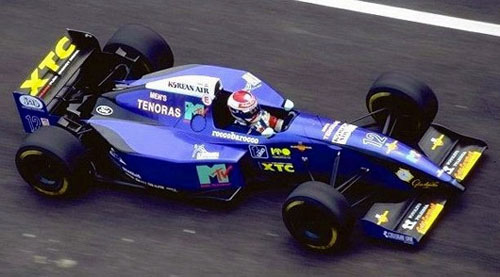
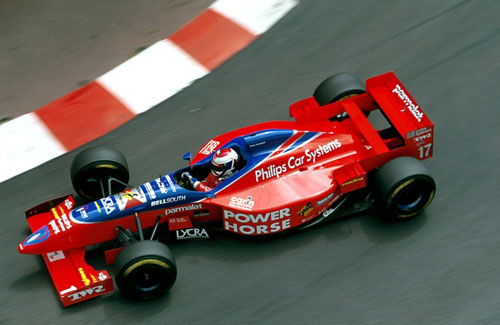
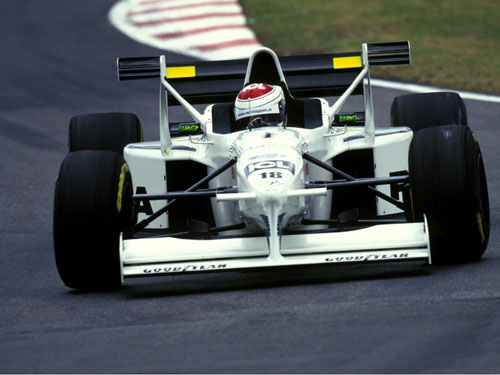
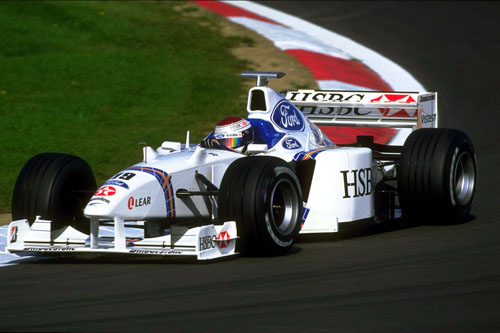
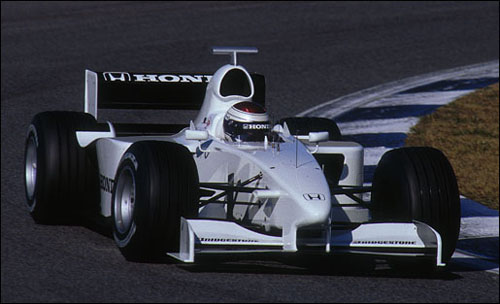
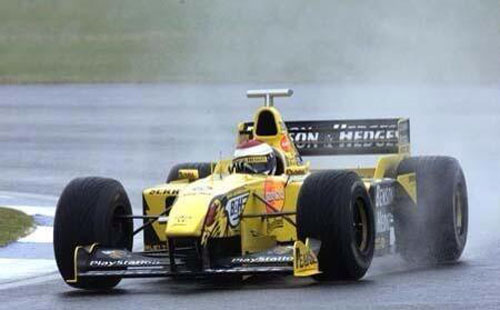
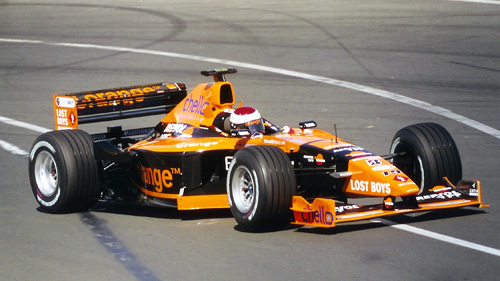
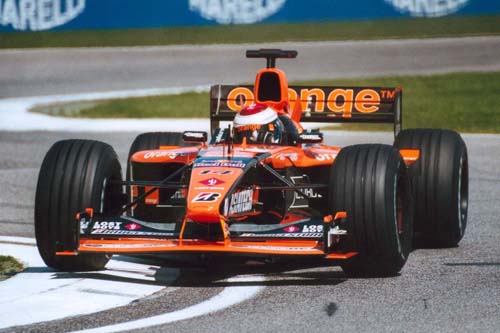
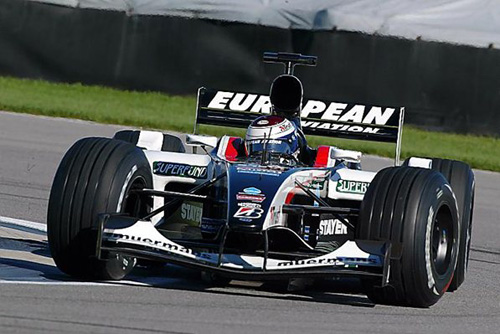
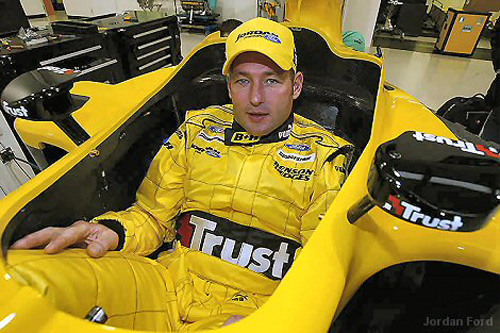
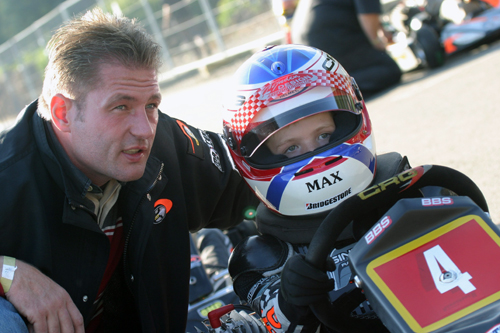
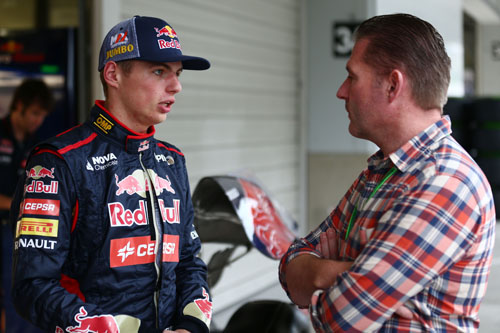

 Posts
Posts